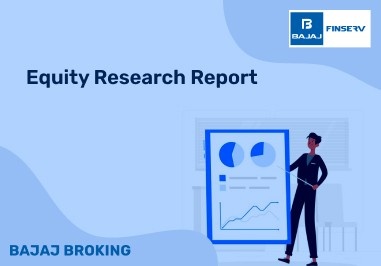Introduction
Stock market indices are used for tracking the performance of certain groups of stocks. With the help of these indices, one can get an idea about the overall trend in the stock market and how well the economy is thriving. Indices often serve as benchmarks for performance analysis.
What are Nifty and Sensex?
Nifty, or Nifty 50, is a popular index of the National Stock Exchange, NSE, of India. This index includes the top 50 most liquid companies of India, across 13 sectors, and was launched in 1996.
Sensex, or the S&P BSE Sensex, is the Nifty 50’s equivalent of the Bombay Stock Exchange, BSE. Unlike the Nifty 50, Sensex represents 30 of the largest companies listed on the BSE. This index was launched in 1986 and is one of the oldest stock indices in our country.
Composition and Selection Criteria
Nifty
The Nifty is a collection of the top 50 largest stocks in the NSE. Its selection criteria include free-float market capitalization, liquidity, and sectoral representation. This index is reviewed semi-annually.
Additional Read: Nifty- A Comprehensive Guide
Sensex
The Sensex is a collection of the top 30 largest stocks in the BSE. Its selection criteria aren’t very different from that of the Nifty. Since the index focuses on a lesser number of companies, it is more concentrated. This index is reviewed regularly, although there is no fixed schedule.
Additional Read: Understanding the Sensex: Your Guide to India's Stock Market Benchmark
Selection of companies
1. Market Capitalisation: The total market value of the company’s outstanding shares, or the market capitalisation plays a major role in the selection of companies for stock market indices.
2. Liquidity: High liquidity of a stock enables easy access to buying and selling the shares of the company and hence is an important factor to be considered in selection.
3. Diversification: Hence the indices attempt to represent the overall market or at least a certain tier of it, diversifying the list based on sectors and industries is an inevitable part of forming stock market indices. Unless of course, the index focuses on one particular sector, such as the bank Nifty which lists top trading banking companies.
Weighting method
While calculating the indices, the shares have to be weighted to be included in the calculation. This weighting process can be done in four ways.
1. Price Weighted: Each stock contributes to the index in proportion to its price.
2. Market Capitalisation Weighted: Each stock contributes in proportion to its market capitalisation.
3. Free-float Weighted: This case is similar to the market capitalisation except that only the publicly traded shares will be considered for calculation.
4. Equal-weighted: The shares will be weighted equally irrespective of other metrics.
Additional Read: What is FinNifty in the Stock Market
Calculation Methods
Nifty and Sensex are calculated using the same method, which is the free-float market capitalization-weighted method. Under this method, only the shares that are traded publicly will be considered. The formula requires you to find the aggregate product of the price of the stock, the quantity of the stock, and the free-float factor of the stock. This product is then divided by a divisor which adjusts the index to a base value.
How to Calculate Nifty?
The calculation of Nifty is performed using the free-float market capitalization weighted methodology. This method reflects the total market value of the constituents in Nifty relative to the base period, which is 3rd November 1995.
To calculate the Nifty index, the first step involves determining the market capitalization of the constituents. This is done by multiplying the number of outstanding shares by their respective prices.
Market Capitalisation = Outstanding Shares x Price
Next, to find the free-float market capitalization, one must multiply the original market capitalization by the Investable Weight Factor (IWF). The IWF indicates the proportion of shares available for trading in the market, essentially the percentage of shares that are not held by company directors or promoters.
Free-float Market Capitalisation = Market capitalisation x IWF
Finally, to compute the index value, divide the current market value by the base market value and multiply the result by the base index value of 1000.
Index Value = (Current Market Value / Base Market Capital) x 1000
It is essential to note that The foundational market capitalization of Nifty stands at Rs. 2.06 trillion. This index signifies the potential returns an investor could earn by investing in that specific portfolio.
In addition to understanding how to calculate Nifty, it is beneficial to explore the difference between sensex and nifty. This knowledge can enhance one's investment strategies. Furthermore, one might wonder what is nifty and sensex, as both indices play a crucial role in the Indian stock market landscape.
Additional Read: NIFTY 50 vs NIFTY Alpha 50
How to Calculate Sensex?
The Sensex is calculated by summing up the closing prices of the top 30 stocks included in the index, each multiplied by its respective weight. These weights are derived by dividing the free-float market capitalisation of each stock by the base market capitalisation and then multiplying it by the index's base value.
The formula for Sensex is as follows:
Sensex = Free float market capitalisation of 30 companies / Base market capitalisation * Base value of the index.
For the calculation of Sensex, the base year is taken as 1978-79, and the base value is static. The base market capitalisation used in the calculation is Rs. 2501.24 crore, with a value of 100 being assigned to this base.
Therefore, the final formula for calculating Sensex is:
Sensex = Free float Market Capitalisation of 30 firms / 2501.24 crores * 100.
Market Coverage
Nifty
Nifty includes 50 stocks in the list including mid-cap companies besides large-cap companies. This provides a wider market coverage and a broader view.
Sensex
Sensex includes 30 stocks in the list and focuses on large-cap companies mostly. The index represents companies in the Indian market that are most financially stable.
Performance and Volatility
Nifty
Nifty focuses on a higher number of stocks and hence its performance is more reflective of the overall market compared to Sensex. Further, the volatility of the Nifty trading index is generally lower thanks to the diversification of the stocks across sectors.
Sensex
Sensex meanwhile focuses on a lesser number of stocks in comparison to Nifty. This means that the performance is affected more by the top-tier companies. A less diverse collection here also increases the volatility of the Sensex trading index comparatively.
Investment Strategies
For Conservative Investors
Nifty: Suitable, but then the exposure to the market is broader with the inclusion of some mid-cap companies.
Sensex: This is more suitable for conservative investors, since most of the companies in this list are large-cap companies.
For Aggressive Investors
Nifty: Here, this index is capable of offering more opportunities thanks to its broader market representation. The inclusion of mid-cap stocks will be advantageous here.
Sensex: This can also be suitable for aggressive investors who are looking for large-cap companies that offer consistency in performance.
Conclusion
Nifty and Sensex are primary indices in our stock market. They are both crucial and serve different purposes. While Nifty is known for its broader representation of the market with its 50 stocks, Sensex is known for its focus on top-tier stocks. While Nifty includes mid-cap companies, Sensex mostly has large-cap companies. However, when it comes to their significance to the Indian stock market they are both equally important.
Knowing the differences between the two indices is essential to make the best use of them. Compatibility has to be checked based on the financial goals, risk appetite, and market outlook of the investors. Irrespective of which index you choose to engage with, both of them have insights to offer and opportunities to provide.
Disclaimer: Investments in the securities market are subject to market risk, read all related documents carefully before investing.
This content is for educational purposes only. Securities quoted are exemplary and not recommendatory.
For All Disclaimers Click Here: https://bit.ly/3Tcsfuc













